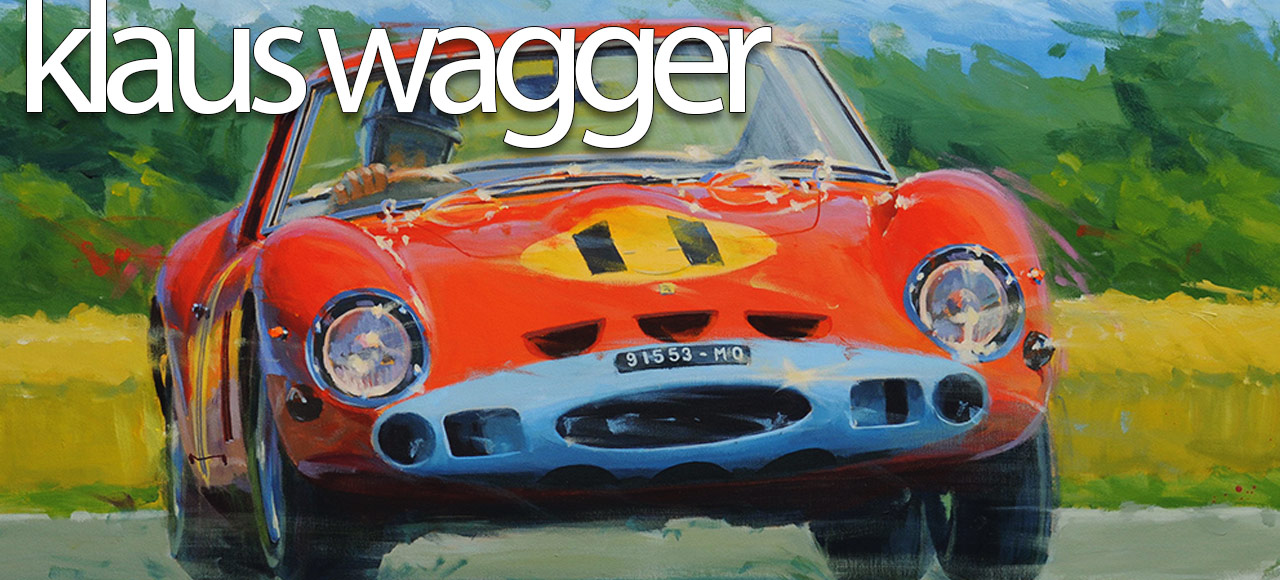
Background and images by Klaus Wagger
Klaus was born in the heart of the mountainous Austrian region known as the Tirol, an often spectacular, rugged, rural landscape. Surrounded by cows in luscious green pastures, and spending a large part of his childhood skiing, the young Klaus may have been expected to turn to farming or the thriving tourist sector for a career, but the area was also home to a very different and noisy distraction – a thriving motorsport scene. Local boys Gerhard Berger and Karl Wendlinger would go on to become global names while all round bad guy (according to Klaus’ parents), Franz Albert, was tearing around in the noisiest and most exotic cars. Klaus was hooked.
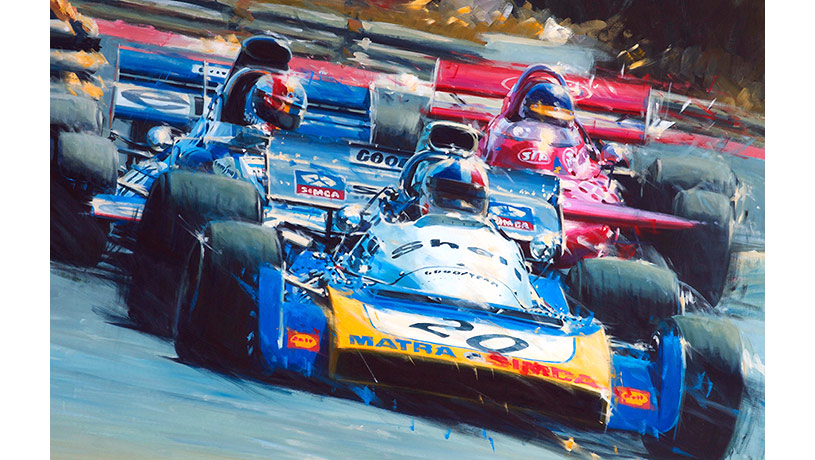
His family did not exhibit much in the way of artistic heritage. A distant uncle was a sculptor. Klaus would spend time in his studio getting a feel for the creative process. When he expressed a desire to study industrial design, his family were supportive even though it wasn’t the choice that they had perhaps envisaged (they were pinning their hopes on something more established, like teaching).
So, Klaus embarked on a career in industrial design, a path that led into the detailed discipline of technical illustration. To counter the more methodical nature of his day job, Klaus found a more expressive outlet in painting, a discovery that was to prove career-changing. Race cars in full flight captured his imagination and so, faced with the prospect of investing heavily in computer hardware and 3D technical drawing software, Klaus turned instead to the paintbrush, and never looked back.
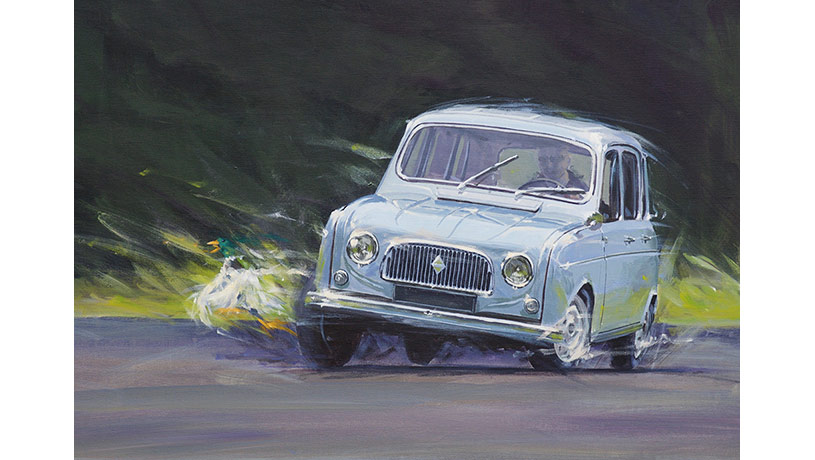
An early, high profile success was winning the contest to do the poster for the legendary Mille Miglia, in Italy. This launched his reputation and lead to a healthy flow of further commissions from the organisers and new clients. Critically, word was spreading in the community, and his work was about to find a ready audience further afield.
The French association, Artist Auto offered the opportunity to exhibit at Retromobile in Paris. Motoring art has always been a strong feature of this premier French show and Klaus’ work made an immediate impact with its bold style and vibrant brushwork. Retromobile has remained the mainstay of his exhibition schedule ever since, with other venues including the Goodwood Revival, Festival of Speed, Amelia Island and Techno Classica.
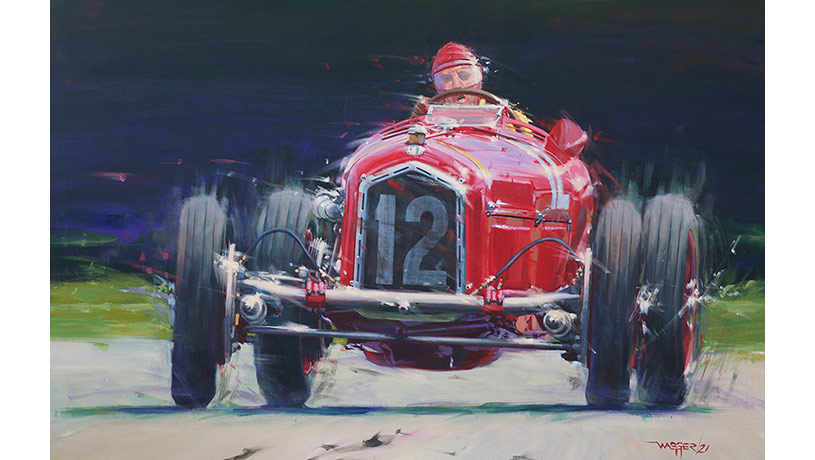
In 2006 Klaus received a fascinating commission to do the annual calendar for the Carabinieri in Italy, a tradition for the force that had started back in 1921. As an Austrian, Klaus was the first non-Italian to have the honour bestowed on him. He recalls it as a truly fantastic cultural experience, as much prestigious event as artistic commission.
In 2007 Klaus was headed to America with a commission to paint the poster image for the Daytona 500. The Speedway subsequently became a regular client. In 2013 Klaus was voted into the prestigious Automotive Fine Arts Society, a recognition that brought with it a new standing as a regular exhibitor at the Pebble Beach Concours.
2015 once again saw Klaus back in England where he took over from Peter Hearsey to create the annual poster image for the Festival of Speed at Goodwood. His latest painting, for the 2023 Festival poster, again showcased the ability his work has to capture the fleeting moment – man and machine, the colour, the excitement, the noise.
At the core of everything Klaus does is a meticulous authenticity. His technical background ensures forensic attention to the details, shapes and position are key. He understands the nuances of race cars and driving dynamics. From this base he avoids sketching out his compositions excessively. Instead, he builds on a deep passion and flair for his subject, finding a fresh, expressive route, an idea in his head that fires his imagination and captures the full, high octane glory of motor racing.
Klaus Wagger Contact »
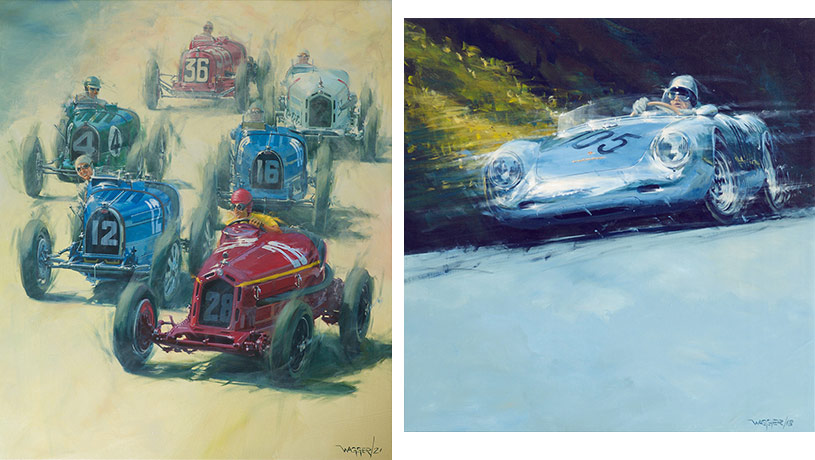
![]()